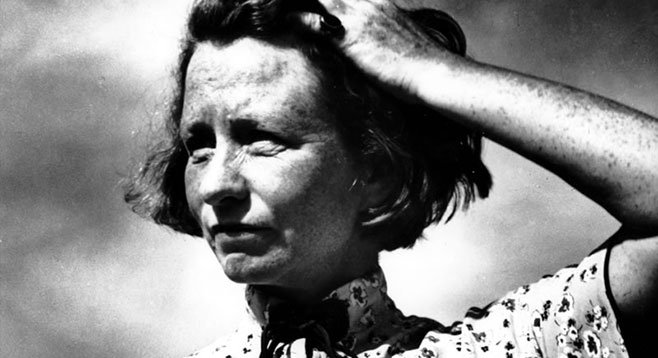 Facebook
Facebook
 X
X
 Instagram
Instagram
 TikTok
TikTok
 Youtube
Youtube

Edna St. Vincent Millay (1892–1950) was born in Rockland, Maine, attended Vassar College, and upon graduation moved to Greenwich Village. Her life in New York she later characterized as “very, very poor and very, very merry.” A playwright as well as a poet, she worked with the Provincetown Players on Macdougal Street in the Village and in 1924 was one of the founders of the Cherry Lane Theater. In 1917, she published Renascence and Other Poems and in 1922 she published A Few Figs from Thistles with Harper & Brothers, in which this brief, charming quatrain appeared. In 1923, when Millay was just 31 years old, she published The Harp Weaver and Other Poems, which won the Pulitzer Prize. A master of rhymed, metrical forms and a superb sonneteer, Millay wrote a poetry that was at once witty, perceptive, passionate, provocatively unconventional in sentiment, and more often than not exquisitely wrought. Beautiful and bisexual, Millay had many lovers both before and during her marriage to Eugen Jan Boissevain. Her brilliant achievements in strict form place her in the first ranks of 20th-century American poets.


Edna St. Vincent Millay (1892–1950) was born in Rockland, Maine, attended Vassar College, and upon graduation moved to Greenwich Village. Her life in New York she later characterized as “very, very poor and very, very merry.” A playwright as well as a poet, she worked with the Provincetown Players on Macdougal Street in the Village and in 1924 was one of the founders of the Cherry Lane Theater. In 1917, she published Renascence and Other Poems and in 1922 she published A Few Figs from Thistles with Harper & Brothers, in which this brief, charming quatrain appeared. In 1923, when Millay was just 31 years old, she published The Harp Weaver and Other Poems, which won the Pulitzer Prize. A master of rhymed, metrical forms and a superb sonneteer, Millay wrote a poetry that was at once witty, perceptive, passionate, provocatively unconventional in sentiment, and more often than not exquisitely wrought. Beautiful and bisexual, Millay had many lovers both before and during her marriage to Eugen Jan Boissevain. Her brilliant achievements in strict form place her in the first ranks of 20th-century American poets.
Comments